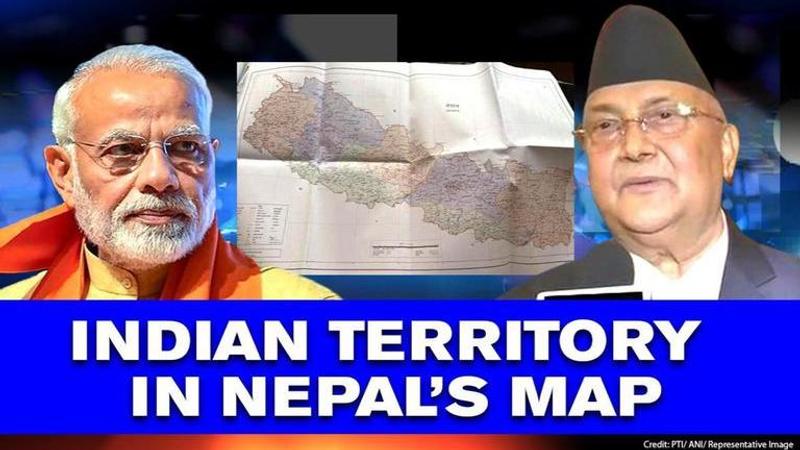Published 11:39 IST, May 20th 2020
After Nepal claims Indian territory in its new political map, PM KP Oli defends inclusion
Raising a border dispute with India, Nepal's cabinet endorsed a new political map showing parts of India's Lipulekh, Kalapani, Limpiyadhura under its territory

A day after Nepal's cabinet endorsed a new political map showing India's Lipulekh, Kalapani and Limpiyadhura under its territory, thus raising the border dispute, the country's Prime Minister KP Sharma Oli has defended the action. On Tuesday, Oli reiterated that Nepal will claim Limpiyadhura, Lipulekh, and Kalapanias through 'diplomatic efforts'. Moreover, he went on to say that the constitution will be amended to formally adopt the newly issued map. Earlier, the country's president Bidhya Bhandarialso said that these parts belong to Nepal and appropriate diplomatic measures will be adopted to resolve the existing issues with India.
While answering a question by parliamentarians regarding the issue, Oli said that diplomatic efforts will be made to bring back the territories. "As Prime Minister of the incumbent government, I want to appraise the honourable house that the issue of Limpiyadhura, Lipulekh, and Kalapani won't be covered up, a conclusion will be drawn regarding it. We won't let this issue fade out and it will be sorted out through diplomatic talks making concrete efforts and the territories will be reclaimed," Oli said.
Nepal's new map
Even as Nepal's foreign minister Pradeep Kumar Gyawali said that efforts were on to resolve the border issue with India through diplomatic initiatives, the country issued an official map showing Lipulekh, Kalapani and Limpiyadhura under its territory. Nepal’s ruling Nepal Communist Party lawmakers have also tabled a special resolution in Parliament demanding return of Nepal’s territory in Kalapani, Limpiyadhura and Lipulekh.
Nepalese media quoted an official at the Ministry of Land Reform and Management as saying: "The new map was drawn on the basis of the Sugauli Treaty of 1816 signed between Nepal and then the British India government and other relevant documents, which suggests Limpiyadhura, from where the Kali river originated, is Nepal’s border with India."
India-Nepal border
India and Nepal share a 1,800km (1,118-mile) open border. The Lipulekh Pass is claimed by Nepal based on the 1816 Treaty of Sugauli it entered with the British colonial rulers to define its western border with India. Kathmandu also claims the highly strategic areas of Limpiyadhura and Kalapani, although Indian troops have been deployed there since New Delhi fought a war with China in 1962. While Nepal claims Kalapani as part of their Dharchula district, India says it is a part of Uttarakhand’s Pithoragarh district.
Recent row between India and Nepal
India and Nepal are at loggerheads after India issued a new political map incorporating Kalapani and Lipulekh on its side of the border in October last year. The tension further escalated after India inaugurated a road link connecting Kailash Mansarovar, the holy pilgrimage site situated at Tibet, China, that passes through the territory that Nepal claims. The 80-km new road inaugurated by Defence Minister Rajnath Singh earlier this month is expected to help pilgrims visiting Kailash-Mansarovar in Tibet in China as it is around 90 kms from the Lipulekh pass. India's Ministry of External Affairs (MEA) had said the road going through Uttarakhand's Pithoragarh district "lies completely within the territory of India".
After the new road was inaugurated on May 8 connecting the Lipulekh pass in Uttarakhand with Kailash Mansarovar route in China, Nepal had protested and said it is also considering putting up a security post in the area. Nepal's foreign minister also summoned the Indian Ambassador Vinay Mohan Kwatra and handed over a diplomatic note to him to protest against the construction of the key road.
Updated 11:39 IST, May 20th 2020




